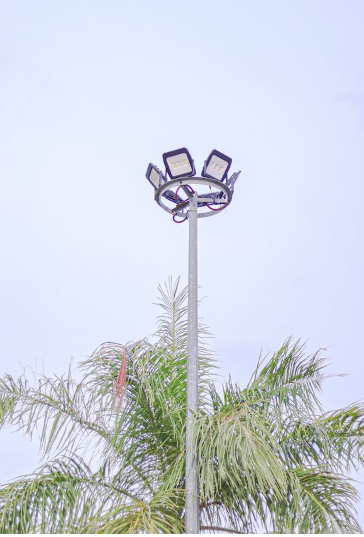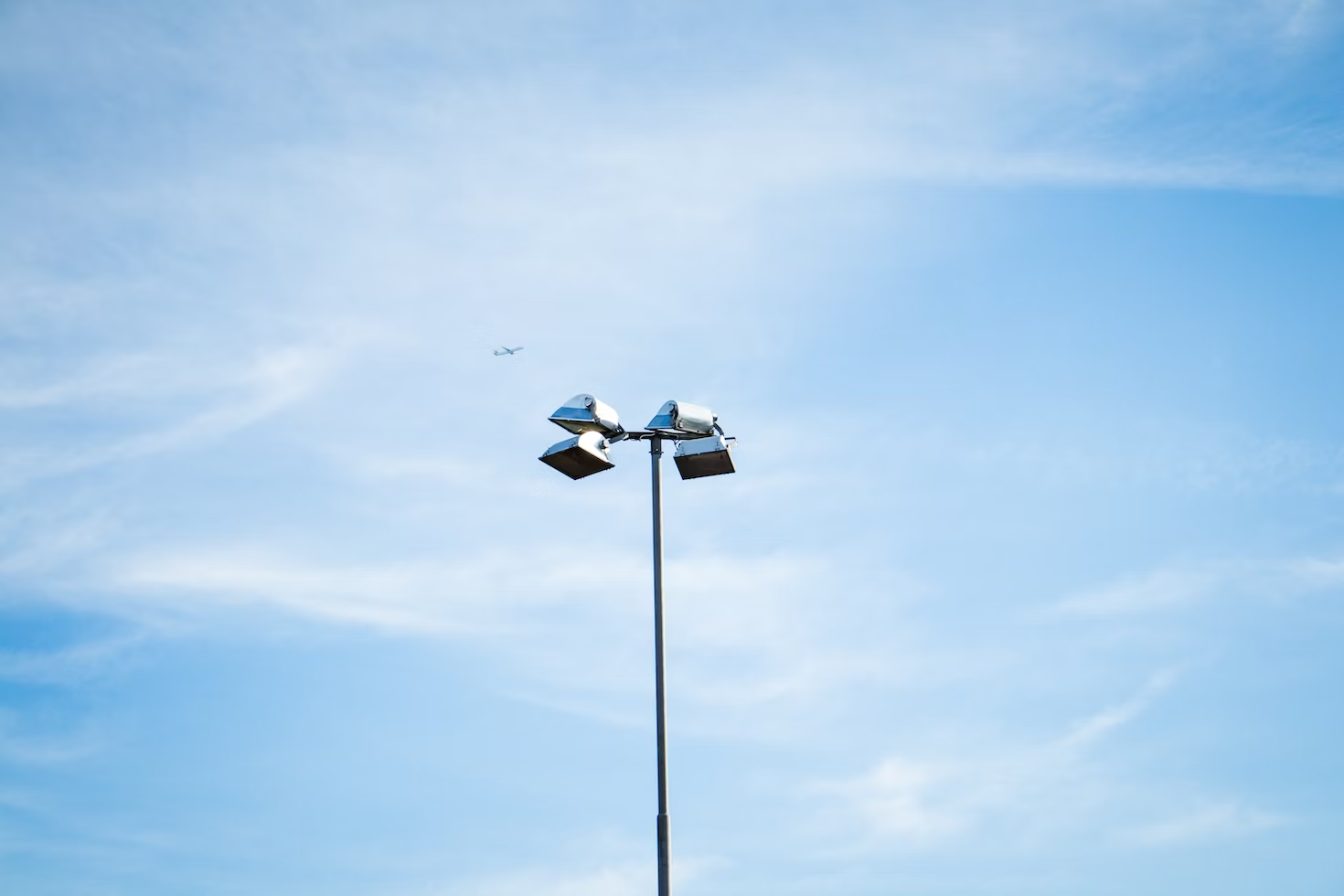As China's economy continues to flourish, the "night economy" has become an integral part, with nighttime illumination and scenic decorations playing crucial roles in driving urban economic development. With constant advancements, there are more diverse choices in urban nocturnal illumination techniques, yet flood lighting remains a classic method for architectural beautification. As night descends, city structures don splendid attires, enhancing the otherwise dark cityscape with allure and vitality, presenting significant humanistic and economic values, courtesy of flood lighting.
Applications of flood lighting encompass three key areas:
1. Building Flood Lighting:Highlighting the unique features and themes of structures, accentuating their beauty and texture.
2. Landscape Flood Lighting: Enlivening trees, water features, bonsai, lawns, and landscapes, rendering them more vibrant and appealing.
3. Urban Flood Lighting:Modernizing cityscapes, emphasizing their distinctive image and fostering a healthier light environment.
Considerations for Building Flood Lighting:
1. Thoroughly understand the characteristics, functions, exterior materials, local cultural aspects, and surrounding environments of the buildings. Craft a comprehensive design concept and desired effects.
2. Select suitable luminaires and light distribution curves.
3. Choose appropriate light source color temperatures and hues based on the building's materials.
4. For glass curtain walls that don't reflect light, consider internally illuminated methods and collaborate with architectural professionals to reserve power sources and use small-scale point light sources for facade lighting.
5. Common illumination calculations involve unit capacity methods, luminous flux methods, and point-by-point calculations.
Features of Landscape Flood Lighting:
1. Lighting in garden landscapes brings a secondary life to the environment at night, creating a brilliant, enchanting spectacle and fostering a sense of beauty and delight.
2. Beyond basic illumination, nighttime lighting serves a decorative function, attracting crowds and infusing vitality into spaces, altering moods, and offering solace to the soul.
3. Landscape lighting design isn't just human-centric but also fulfills the aesthetic requirements of ecological environments and lifestyles.
Features of Urban Flood Lighting:
1. Urban flood lighting not only showcases a city's vitality but also crafts a distinct urban atmosphere. It enhances elements like squares, gardens, landmarks, and roads, creating a splendid yet practical nocturnal scene for people's physical and mental enjoyment.
2. Rational application of architectural flood lighting utilizes light colors, considering the environmental setting and material characteristics, to create lively or serene atmospheres, achieving ideal artistic effects.
Certainly! Continuing from where we left off:
Characteristics of Urban Flood Lighting:
3. The most significant characteristic of flood lighting is altering the inherent colors and textures of buildings through light, transforming illuminated structures into crystalline, semi-translucent bodies. It's a fusion of technology and art, rendering architectural forms and colors at night.
4. The application of architectural nighttime lighting techniques depends on factors like texture, image, volume, scale, color, desired lighting effects, viewing points, and relationships with the surrounding environment. Lighting techniques include concealment and revelation of light, accents, contrasts, rhythm, integration, flow, and coordination with colors.
Forms of Flood Lighting Expression:
For conventional flood lighting designs, typically three forms are employed:
1. Flood Lighting:Directly illuminating buildings using floodlights to highlight their forms and distinctive features.
2. Outline Lighting: Placing LED lights on the edges of structures to outline their basic shapes, often using LED strips or digital tubes.
3. Dynamic Lighting: Utilizing various LED lights controlled by a controller to continuously alter patterns and colors, enhancing the 3D lighting effect and displaying modern architectural cultural colors.

Design Approaches and Key Points:
Consider External Building Materials:
- Surface texture significantly influences lighting effects.
- Rough surfaces like paint, stone, or tiles show better illumination effects after light exposure.
- Smooth surfaces like aluminum or glass reflect light and require tailored lighting techniques. For instance, glass can consider internal lighting methods.
Focus on Interaction between Light and People:
- Lighting designs in garden landscapes must ensure safety and create immersive light and shadow experiences, enhancing interaction.
- Immersive lighting environments allow visitors to engage more deeply, leveraging light for immersive experiences.
Designing Garden Landscapes for Different Scenes:
- Landscape lighting designs cater to varying scene changes and the region's ambience, creating different atmospheric moods as per the area's requirements.
- Different types of lighting fixtures like courtyard lights, landscape lights, tree lights, buried lights, lawn lights, wall lights, contour lights, light strips, underwater lights, and light sculptures are used in modern landscape lighting.
Water Feature Landscape Lighting:
1. Water features are integral parts of garden landscapes, varying from expansive lakes to streams, fountains, waterfalls, and pools. Nighttime illumination for water features mainly uses lighting on the actual and reflected landscapes and the trees and railings on the banks to create reflections. This interplay between reflections and actual features enriches the visual experience, adding dynamism and charm.
2. For fountains and waterfalls, underwater lighting is employed. Placing underwater lights of similar or different colors arranged in certain patterns creates magical effects and adds unique charm to these features.
Considerations during Lighting Fixture Installation:
1. Optimal Placement: Select suitable positions for fixtures, ensuring even illumination. Proper distances and fixture heights are crucial.
2. Consistency: Light intensity should align with the ambient environment, avoiding excesses that might distort the surroundings.
3. Brightness and Temperature: Luminosity and warmth or coolness of the lights need careful consideration, distinguishing primary and secondary areas.
4. Installation Density: Ensure good uniformity. Fixtures installed above buildings should be spaced at 2.5 to 3 times the bracket length to avoid creating fan-shaped bright areas.
Integration of Lighting with Nature:
1. Lighting design should blend with nature, respecting the biological and physiological rhythms of humans and nature, minimizing impact on natural beings due to lighting changes.
2. Future lighting systems should adhere to ecological principles, promoting low carbon and reduced energy consumption, minimizing disruptions to natural life forms.
3. Ideal lighting environments should merge humanistic, artistic, and ecological values, harmonizing with society and fostering a unified vision.

Key Aspects of Flood Lighting Design:
1. Highlight Significant Landmarks: Emphasize and showcase important elements or features within the landscape. This could be sculptures, fountains, trees, or buildings.
2. Create Layers: Use light angles, heights, and intensities to generate depth within the landscape. Employ spotlights, wall washers, or in-ground lights for varied shadows and reflections, enhancing dynamism.
3. Color Consideration: Opt for appropriate hues to add drama and ambiance. Warm or cool tones create diverse moods, influencing emotions and perceptions.
4. Lighting Control and Dynamic Effects: Utilize smart control systems for precise management. Adjust brightness, color changes, gradients, or flicker effects to create dynamic lighting, increasing allure and interactivity.
5. Surrounding Environment: Account for the surroundings to prevent disturbance or light pollution. Avoid excessive illumination or direct skyward projection.
6. Energy Efficiency and Eco-friendliness: Choose LED fixtures and smart control systems for reduced energy consumption and environmental impact.
Flood lighting, predominantly applied in outdoor settings like architecture, gardens, scenic spots, and sculptures, aims to draw attention to specific areas, making illuminated zones the visual center of the night environment, attracting attention and creating a lively nocturnal atmosphere.
Flood lighting not only enriches nighttime experiences and creates exceptional environments but also holds significant implications for urban cultural tourism development, shaping city nightscapes, and fostering cultural ambiance.
Post time: Dec-28-2023
